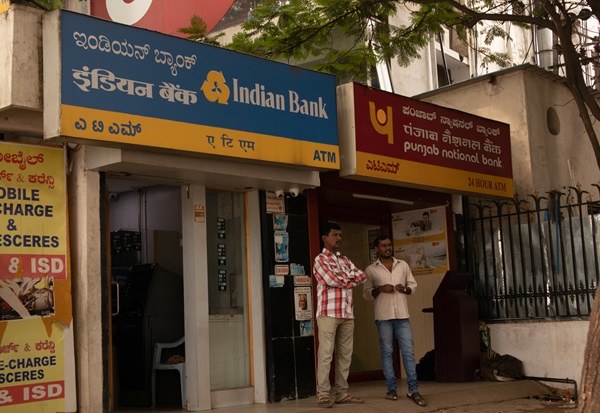.png)

Kembai Srinivasa Rao is a former banker who teaches and usually writes on Macroeconomy, Monetary policy developments, Risk Management, Corporate Governance, and the BFSI sector.
August 14, 2025 at 7:30 AM IST
India’s banks are running out of easy funding fuel. Deposit growth has slowed, liquidity is tightening, and younger customers are channelling savings into alternatives that promise higher returns and instant access. Unless the industry rewires its business models to match these structural shifts, the next liquidity shock could be more damaging than expected.
The warning signs are already in plain view, and the choices banks make over the next few years will decide whether they remain stable anchors of the financial system or become fragile under pressure.
The structural imbalance is clear in the numbers. In 2024–25, bank credit expanded by 12.1%, down from 16.3% in the previous year. Over the past three years, deposits have grown at an average of 12.2%, while credit has risen at 13.4%. This widening gap between credit growth and deposit inflows means more lending is being funded by higher-cost wholesale borrowing, adding strain to bank liquidity.
The Reserve Bank of India’s own data underline the mismatch. As of March 2024, only 42.5% of liabilities such as deposits and borrowings had maturities beyond five years, compared with 57.5% of assets like loans and investments. In short, banks are lending long and funding short, leaving them more exposed to funding shocks.
The underlying drivers go beyond temporary fluctuations. Household savings rates have been falling, influenced by rising financial literacy and greater awareness of non-bank investment products. New-age customers, including a growing proportion from Gen Z, Millennial, and even Gen Alpha cohorts, are more willing to experiment with higher-risk assets that offer better returns and faster liquidity.
Many are less concerned with the stability of their bank account balance and more focused on the ease of moving money when they spot an opportunity elsewhere. This behavioural shift has had a visible impact on low-cost funding: the share of current and savings account deposits in total bank deposits has fallen from 45% in 2021–22 to around 38–41% in 2024–25.
Technology, while enabling growth, has also made the funding base more volatile. The ability to transfer funds instantly through mobile apps or internet banking means that large deposit outflows can occur in minutes. Regulators have taken note. The RBI will, from April 2026, require an additional 2.5% run-off buffer for certain mobile and internet-linked deposits to reflect the heightened risk. The collapse of Silicon Valley Bank in March 2023 in the United States remains a cautionary tale of how quickly digital withdrawals can spiral into a liquidity crisis.
India’s banking landscape has also been evolving in its sources of income. Many banks have expanded into partnerships with non-bank finance companies, fintech firms, and embedded finance platforms. Wealth management and insurance distribution are now mainstream revenue streams. Non-interest income has grown in importance, while interoperable technology allows centralisation of back-office operations to improve efficiency. These changes have brought new capabilities and diversification, but they remain piecemeal adjustments rather than a coherent redesign of the business model to address structural asset-liability imbalances and rising competition from non-banks.
A truly future-ready business model will need to be built on deeper strategic analysis and more rigorous forecasting. PESTLE frameworks can help assess political, economic, social, technological, legal and environmental factors shaping the industry. VUCA tools can prepare institutions for volatility, uncertainty, complexity, and ambiguity. Advanced analytics, machine learning, deep learning, generative AI, and even quantum computing will be essential for predicting shifts in both funding availability and credit demand. Hyper-personalised products, designed using big data insights, can help secure customer loyalty in a market where switching costs are falling.
Scale remains another limiting factor. India’s credit-to-GDP ratio is about 56%, compared with 130% in advanced economies. Only two Indian banks rank among the top 100 globally by assets. The ambition of Viksit Bharat 2047 will require bolder risk-taking, larger balance sheets, and greater efficiency in channelling credit to productive sectors. This will involve diversifying funding sources, rethinking deposit acquisition strategies, and in some cases revisiting the minimum balance requirements for accounts to protect net interest margins.
The regulatory environment is also shifting. The RBI has introduced changes to co-lending norms, gold loan rules, non-fund-based facilities, and claim settlement timelines for deceased accounts. These interventions, while important for consumer protection and prudential oversight, also require banks to adapt their operations. Compliance, however, is not a substitute for strategy. A sound business model should integrate regulatory compliance as a baseline while retaining flexibility to compete effectively and manage risks.
The industry’s approach to liquidity management will be central to this transformation. This is not simply a matter of holding more liquid assets. It means embedding liquidity risk assessment into every layer of decision-making, from product design to credit policy to treasury operations. Banks must consider the maturity profiles of their liabilities alongside their lending strategies, ensuring that growth in credit does not run ahead of stable funding sources.
The urgency is real. Liquidity risk rarely announces itself in advance, and when it does surface, options are often limited and expensive. The combination of slower deposit growth, changing customer behaviour, digital volatility, and heightened regulatory expectations creates a narrow window for action. Indian banks still have the time, and the broader economic momentum, to reshape their business models before they are forced into reactive measures.
The choice is between deliberate redesign and enforced adaptation. A well-aligned business model, built to match the evolving asset-liability structure and competitive landscape, will allow banks to absorb shocks and sustain profitability. The alternative is to allow the next liquidity crisis, whether triggered by global turbulence or domestic stress, to dictate the terms of survival. In the end, the stability of India’s banking sector will depend less on the size of the balance sheet and more on the quality of the model that underpins it.




